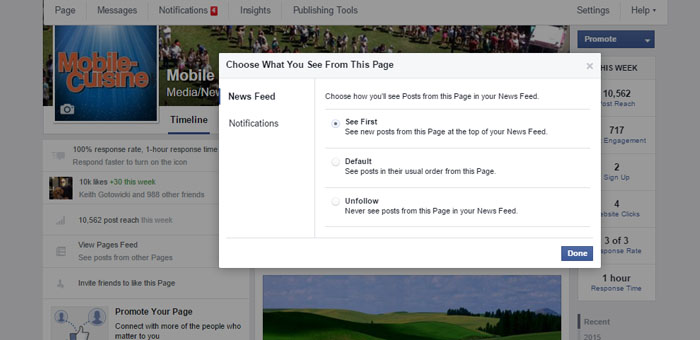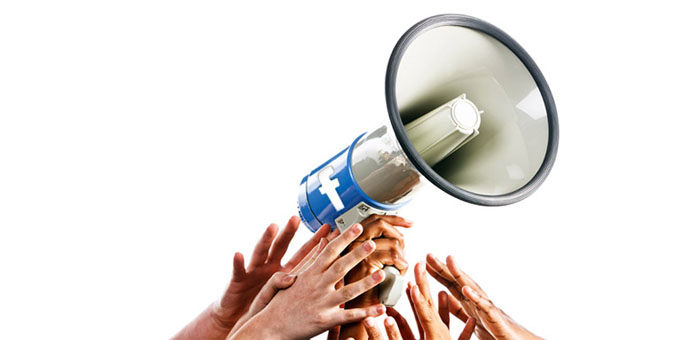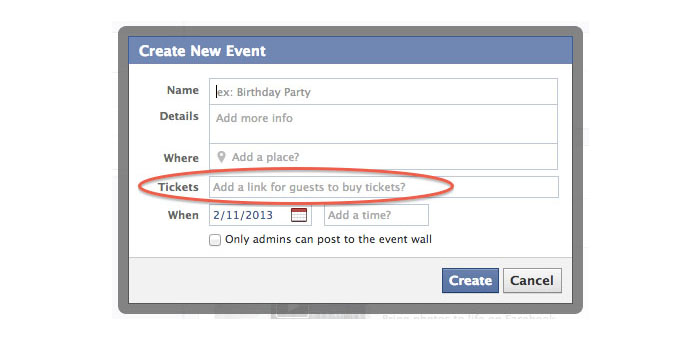This series of articles is intended to be a simple list of Twitter essentials every food truck or cart owner should read, and use to modify their business social media marketing strategy if you feel, your current plan isn’t working as intended.
Twitter is the primary marketing and advertising platform used by mobile food vendors, and to maximize its use we came up with these tips to help anyone from the first time user, to a food truck owner with over 30,000 followers.
8. Spread the word
 This is one of the fantastic parts of Twitter. You can be informative and reveal interesting information with links. Some of it can be links to your own press clippings or information that refers back to you but the majority should be information that not only you’re interested in but things that you think your followers will like as well.
This is one of the fantastic parts of Twitter. You can be informative and reveal interesting information with links. Some of it can be links to your own press clippings or information that refers back to you but the majority should be information that not only you’re interested in but things that you think your followers will like as well.
If you’ve engaged a following by revealing your personality as well as your food style or the mere fact you are a mobile kitchen then you should, as we said before, have some idea of what you have in common and what they’d want to know about. Links will generally be to an article you read online in your local paper (or even better something your read at Mobile Cuisine Magazine), or perhaps to a flickr group or a forum thread. Your followers should feel that clicking on the link will benefit them. Tweeting links to other food trucks and articles about those mobile bistros can very quickly build the respect amongst your followers.
As you only have 140 characters to work with, most links need to be shortened. If you’re tweeting from the Twitter web platform, this is not done automatically so you’ll find yourself needing to use a URL shortener. My favorites are tinyurl.com or bit.ly but there are many alternatives.
Tweeting links that appeal to your followers should be a key part of your Twitter strategy, it engages people, starts conversations and shows people that you’re active as both a food truck or cart owner and in Social Media and it reveals your personality. You can tweet links to anything that fits with your previous behavior on Twitter and that your followers will like. But, balance all link tweeting with one-on-one interaction and remember, not too many links back to your own site.
If you’re doing it right people will go off Twitter and check out your website anyway – the URL is on your Twitter page after all, isn’t it?
9. Retweet
Passing on or forwarding the wisdom of others is the art of the ‘Retweet’. It’s done by adding ‘RT’ in front of the username of the person whose tweet you’re passing on – so ‘RT@MobileCuisine’ followed by our tweet will send that to all your followers.
It also lets your followers know that the tweet came from us originally, as well as letting us know that you’ve passed it on as we see it appear as a ‘RT’ in our stream.
Clearly this pushes any tweet into another realm of viewing figures. It’s generally accepted that a Twitter user with a vast following will cause a massive bump if they RT your tweet, but, there will then be another massive bump as all his followers do the same as they repeat his wisdom!
It’s a form of flattery, of course, toward the person whose tweet you are forwarding to your followers. But, and this is probably more important, you’re demonstrating that you’re using Twitter, reading what other people are saying and getting value from it that you want to pass on.
That will make people follow you and believe that you want to pass on good stuff, rather than just promote your business. Of course, a great effect of being a solid RT’weeter is that many of those you re-tweet will return the favor sending you traffic and hopefully promoting your information when you need them to.
It’s not to be seen as tit-for-tat and you shouldn’t make a habit of asking for the RT, but it will happen organically. In some cases you can ask your followers to RT for you, but, again, don’t just do this when it’s for a self-promoting tweet.
Don’t be a bore and just retweet everything someone says. That shows a lack of imagination. You can get a load of information about what’s going on with your tweets as far as RT’ing goes by clicking the ‘Retweets’ link on your Twitter timeline. And should the person who retweets your stuff be thanked? – generally yes, but if you have too many followers and don’t do it all the time people will mostly understand and not be offended.
One last thing about RT’s and thanking. When someone has RT’d one of your tweets, a golden opportunity has opened up. You could just thank them on Twitter as we talked about, or you could use that moment to open up a new relationship on an entirely deeper level, and who knows where that networking might lead.
How so? Well, go and look at their profile and see where else you can connect with them – Facebook, or their own site or blog. Is there a blog post that you can tweet a link to, a comment you can leave, maybe subscribe to their RSS feed? If they’ve RT’d a few times, send them a DM and give them your email address, IM / AIM or even Skype address or phone number and see if you can take the fact that you’ve had some common interest that little bit further.
Networking = the lifeblood of a mobile food business!
10. Direct Message
The DM is very often misused and it can do plenty of damage to the speed of your follower growth and the way they perceive you. It can be a great way to make a deeper connection by sending someone a message that isn’t broadcast to the whole world.
Please note, you can only direct message a user who is following you back. So, unfortunately, many users who you might want to message are out of your reach, meaning that you’ll need to use the ‘@reply’ to try and get their attention, which will be public.
One issue for many Twitter users is the auto DM that people can send when you start following them. Does it have its place? That’s a tricky one.
Conventional marketing wisdom loves the idea of ‘hit them while they’re hot’ – so send a DM as soon as someone starts following you – but Twitter is about long-term engagement and conversation and the conventional Twitter wisdom is that the sending of such a DM is too pushy. If it is, you’re getting a new relationship off to a poor start and may well get instantly unfollowed.
If you really want to send an automated DM to all new followers, DON’T ask them to do anything in it, particularly don’t ask them to sign up on Facebook or your site or go anywhere else – just say thanks!
If you’re going to do it, the best way is to do it through an account at SocialOomph, which offers cool functions that you might find useful.
Using Hashtags is a way of putting your tweet into a stream of related tweets and conversations and helping them to spread further. The idea is that all the tweets about a specific subject become united and therefore become a searchable category.
This is done by putting the ‘#’ symbol in front of the keyword to which your tweet relates. Most commonly they’re used to refer to a specific phrase, a group, an event or location. An example of this would be ‘#foodtruck’ used by people referring to an article they read about the growing mobile food industry or a food truck in their area that they just ate from.
Although people think they are the best way to alert people to the fact that their tweet is on a certain topic, it seems that they have been somewhat misled.
In fact, the latest data shows that hashtags are not as often searched for and as commonly referred to as people think and that a standard search for the words you’re after will generally give better results. This is because they aren’t universally understood nor used by the majority of Twitter users. It could easily be argued though that searching for a hashtag is more effective since it’ll stand out in a search result.
Nonetheless, that is a revealing fact as it means that those using and searching for hashtags are the Twitterati elite and therefore people who you definitely want to be able to reach and influence. There is no doubt that this group of users is monitoring the hashtags that they find interesting, so you can easily drop your tweets into that stream.
A lot of Twitter traffic also goes through the front page of Twitter where people can look at and search through ‘Trends’ to see what people are talking about right now. The importance of influencing trending is increasing all the time as more and more people use 3rd party applications.
By adding hashtags to some of your tweets should bring you to the attention of new followers. For example, tweeting about an upcoming food truck event with the relevant location hashtag could bring in new foodies from that local area.
Often a hashtag comes into being for the wider community and offers a chance to reach everyone taking part.Can you think of one that would spread and appeal to your target audience?
Many hashtags come into being in a de facto way just because people start to use them and see others using them so they get adopted universally. There is no set procedure to follow if you want to introduce a new hashtag for a particular event – but do let all the people who might want to use it know about it.
However, you can look at Tagalus for a list of definitions to see what is being used to refer to a specific phrase and you can submit a new hashtag to them there or via Twitter (‘@tagalus’). But, it’s not required. Hashtags.org is the site behind the Twitter tags – use it to find out more about a particular tag and to see trending information.
A word of warning though; don’t overdo it. Like anything on Twitter don’t just tweet with a hashtag in every one. And don’t put loads of different one word tags in one tweet. ‘#London #North #Pub #Pint #BeerGarden’ isn’t how it works!
Two classics for the mobile food industry are #FF and #FollowFriday. These apply to all Twitter users but obviously being recommended as someone to follow (on a Friday!) can only bring you more followers. You should use this both ways and be recommending people as well as looking to get recommended, don’t ask random people to #FF you, maybe your closest friends on Twitter now and again.
We hope this article on the use of Twitter will help those of you new to this social media platform, but may also lead to tips that even the seasoned Twitter user can use to better enhance the message you are trying to get out for your mobile food operation.
Keep an eye out for future articles on this subject.




